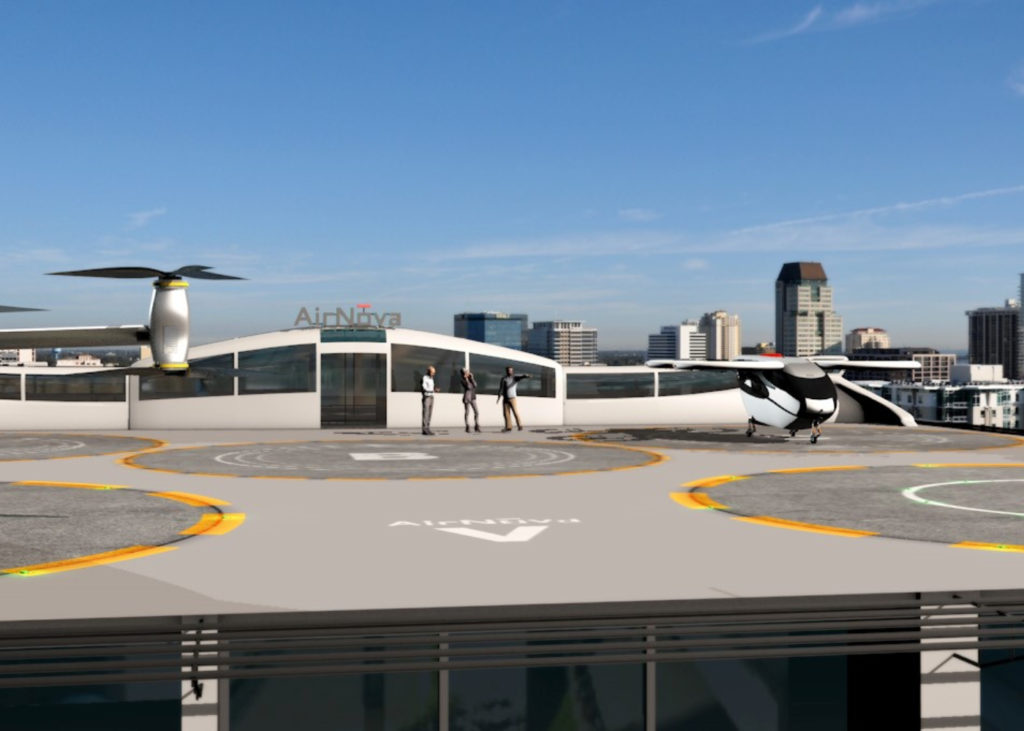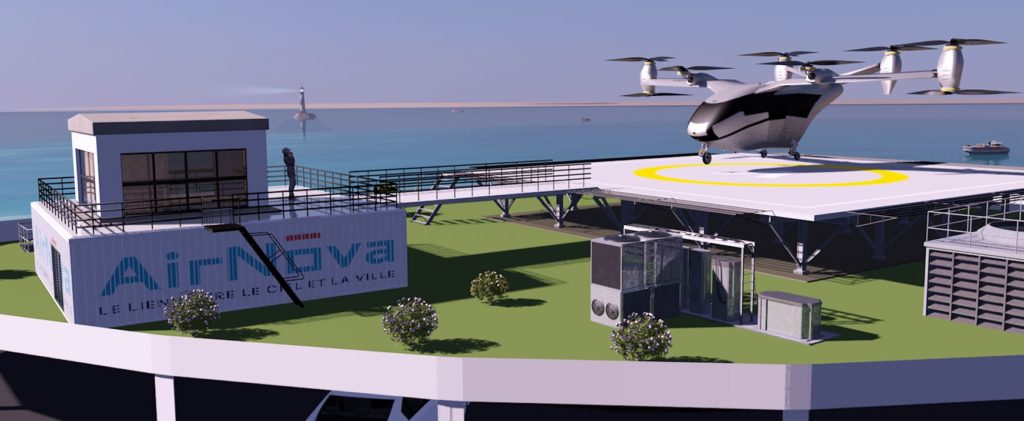Airnova, a vertiport company headquartered in Bordeaux, France, has launched a €3 million (US$3.2 million) fundraising campaign to develop what could be the first vertiport network connecting all the main cities in France. The company’s founder has already invested €500,000 (US$527,000) into the project, and is currently discussing additional fundraising with angel investors and investment firms.

The company aims to build 15 to 20 new vertiports per year starting in 2023.
“In 2020, Airnova [created] a unique [vertiport] design that was later approved for the French territory in April 2022 by INPI, the French institute for intellectual property rights,” said Laurent Mathiolon, CEO and founder of Airnova. “An extension to the rest of Europe is currently under approval.”
With a background in civil engineering, Mathiolon has been leading construction, real estate and land development projects for over 35 years through his other company Aqprim.
Airnova’s vertiports are designed for multimodal operations, including cargo and last mile delivery, passenger transportation, and civil safety operations, such as firefighting and air ambulance.
Airnova said each of its urban vertiports will have two landing pads and two parking stations for logistics operations and fast battery charging — all of which will take up a ground surface area of around 1,000 square meters (10,700 square feet).
The vertiports will be designed to provide eVTOL aircraft with access to a variety of power sources, such as electric charging stations or future hydrogen charging stations when the technology is available. Reserve batteries can also be installed near the parking stations.
Mathiolon said the landing surfaces are designed to accommodate aircraft up to eight tons, and a slight elevation aims to improve eVTOL landing performance by reducing venturi and ground effects. This configuration will also enable an easier access to the underbelly of eVTOLs for logistics and battery maintenance operations, he said. In developing its vertiport design, Airnova consulted with eVTOL companies such as Volocopter and Airbus, as well as several helicopter operating companies.

Utilizing robots and AI
Once cargo aircraft have landed, its goods can be extracted using a robotic arm. An elevator will then bring the merchandise to a logistics room where a series of robotic arms and conveyor belts will dispatch it to the various urban transporters.
There will also be a system of connected lockers at the bottom of the building in order to collect small packages. The company plans to partner with transporters that will ensure last mile delivery service using only electric and zero emission transportation, such as electric cars, trucks or bikes.
A small control tower staffed with trained personnel will be installed at each Airnova vertiport, and a series of cameras assisted with artificial intelligence (AI) will help drone sky controllers monitor each aircraft’s landing and take-off.
Airnova is currently developing eVTOL passenger control solutions in partnership with French company Dassault Systèmes. The vertiport will also use automation to manage passenger boarding, including validating the passengers’ ticket and identity and providing them with access to the boarding area. Each step will be validated remotely by a supervisor.
Advanced technologies, including facial recognition, light detection and ranging (LiDAR), 3D screening, and AI, will be used to ensure safety, Mathiolon said.

Vertiport designs
Airnova will offer three main types of vertiport designs. This includes converting existing helipads on the roof of hospitals by adding battery charging stations and robotics arms to support medical logistics operations.
Airnova also plans to build vertiport infrastructure on the ground called VertiStations, ideally outside the city and near logistic hubs. These VertiStations are intended to carry out eVTOL operations in regional or countryside areas. And finally, Airnova plans to build urban vertiports on rooftops of elevated buildings, providing direct access to the city center.
Mathiolon estimated these vertiports to cost US$500,000 for a countryside VertiStation, and up to US$3 million for an urban vertiport installed on the roof of an elevated building.
After administrative authorization is granted, Mathiolon said it should take between 12 to 24 months to build a vertiport, and between six to eight months to convert an existing heliport in order to accommodate eVTOLs.
First network locations
Airnova said it plans to construct vertiports as early as 2023, first targeting the biggest cities in France, such as Bordeaux, Nantes and Toulouse.
In Paris and its outskirts, the company will look at hospitals, train stations, logistic hubs, main tourist sites, and business centers as potential vertiport sites.
Airnova intends to build its vertiports about 10 to 15 kilometers (six to nine miles) from one another in densely populated areas, and 30 to 300 km (19 to 186 mi) in its regional configuration.
Mathiolon said that a one-way trip from Bordeaux to Toulouse, which could take around two hours by train or three hours by car during rush hour, would now be carried out in under an hour by eVTOL.

Paris 2024 Olympic Games
Airnova has been solicited by a mayor and several territorial authorities from the Paris region to develop eVTOL vertiports for the Olympic Games in 2024.
“The public will be significantly attracted to eVTOLs once they witness the first flights operated during the Paris Olympic Games in 2024. We can expect a huge increase in vertiport and eVTOL aircraft demand,” Mathiolon said.









